I woke up this morning with battleships on my mind and wanted to write about something interesting so naval history is to be the order of the day. So here we go…
The Iowa class battleships were the last class of battleship ever built by any navy and some folks consider them to be the epitome of battleship design and construction. I’m not sure that is the accurate and hands would prolly get thrown and tables flipped over if this ever came to a debate between us battleship/navy/history nerds, but the ships did serve their purpose well up until the early 1990’s. Presently, all four of them are retired and on display as museums throughout the country. It would be well worth your time to visit these ships as well as all the other museum ships, especially the USS Alabama in Mobile.
The construction of the class was authorized prior to World War 2 as the Navy planners envisioned a future war with Japan and knew they would need something different than what was being built at the time; both the North Carolina and South Dakota classes. Construction of the USS Iowa BB-60, started in 1940, well before the 7 December 1941 attack on Pearl Harbor, “a date which will live in infamy…” as spoken by the communist sympathizing and manipulated President FDR.
The Iowa class was not the battleship that the Navy necessarily wanted but rather a compromise and was considered to be an interim design until the Montana class could be built. The Montana class was what the big gun Admirals of the Navy wanted but thought that war would break out before they could be developed and built.

One of the design considerations for the Iowa class battleships was that the ship would have 9 18"/47 caliber guns instead of the 16"/50 caliber guns that the ships were ultimately built with. 18" Guns were designed, built, and tested for the Iowa class, one still exists today at the Dahlgren Weapons testing facility in Virginia, but they were never used beyond the testing phase. The Navy didn't think there was a need for a weapon of that size to compete with any other navies so the design was dropped and the Mark 7 16"/50 Caliber gun was developed as was the Mark 8 armor piercing (AP) projectile. Just a side note; American battleships were designed to be able to withstand being hit by the same guns that they carried. No American battleship was able to completely withstand the impact of the Mark 8 AP round, not even the Iowa class. The Iowa class were "resistant" to those shells but not completely immune to a side impact from them. The follow on battleship class, would've been immune (in theory) to a side impact from the Mk 8. The Montana class was designed but never built.
Little did the Navy know at the time, the Japanese Navy were building the Yamato class battleship with 18.1" guns. It was thought that the Yamato would have 16” guns and the Japanese were very successful at keeping information about the Yamato secret. The Yamato class main battery out ranged the Iowa class main battery by 4 miles and did so with a shell that was about 600lbs heavier than the Mk8. However, the Iowa class shells had the same amount of impact energy as the Yamato's shells due to the fact that the Mark 7 16"/50 caliber gun fired it's AP shell at a higher velocity than the previously used 16" guns. A heavier shell at a higher speed will have a higher amount of energy. Its science... Essentially, the Iowa class and the Yamato class were evenly matched even though the Yamato had a larger gun and much heavier armor.
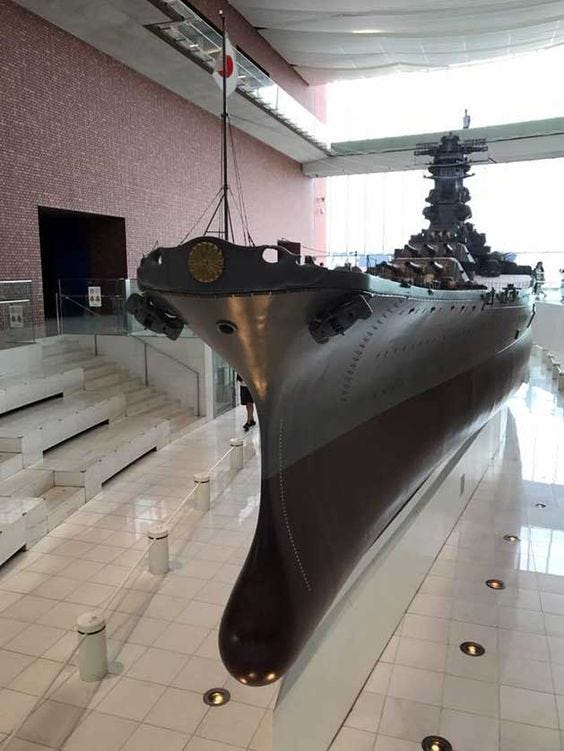
The Japanese Navy had initially planned to build four ships of the Yamato class. Two were finished as battleships; Yamato and Musashi, and a third hull was completed as a the aircraft carrier Shinano. The fourth ship was never completed and was ultimately cancelled. These ships were incredibly ambitious in design and construction and Japanese industry wasn’t able to build them ships fast enough. All three completed hulls were sunk during the war. Shinano was sunk on 29 November 1944 by the submarine USS Archerfish while underway during builders trials.
The ultimate test of which gun would've been better never happened. Both ships of the Yamato class, the IJN Yamato and the IJN Musashi, were both sunk by aircraft. The Musashi was sunk at the battle of Leyte Gulf on 24 October 1944
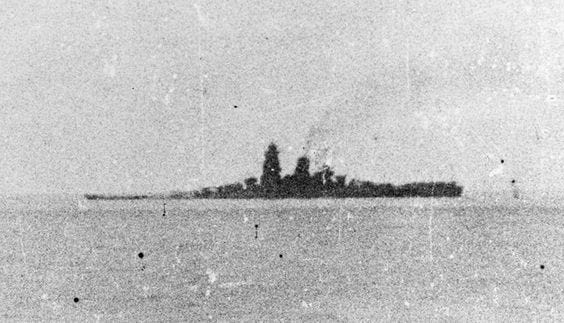
and the Yamato was sunk en route to the Battle of Okinawa on 7 April 1945.
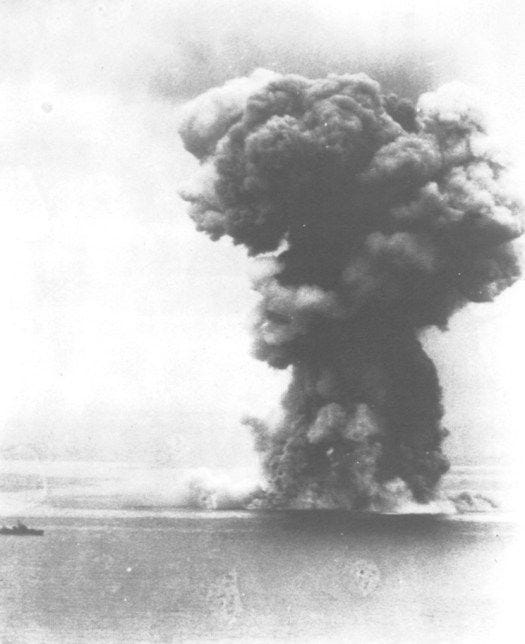
After the war, the US Navy brought whatever was left of the Yamato class armament and armor back to the US for testing. One of the pieces that was brought back was a piece of armor 26” thick, most likely from the face of a main battery turret that would’ve been for the Shinano had she not been converted into an aircraft carrier. The Navy did what any group of men who had access to big guns and a unlimited budget would do and they shot the armor with a Mk8 shell to see what would happen. The result was that the Mk8 penetrated that 26” thick piece or turret armor with ease. Though I’m sure that this was a point blank shot, it’s still impressive in my mind, however I don’t believe this to be an accurate test of whether or not the MK8 would have penetrated the main battery turret since the armor as installed would have been at an angle, which can cause the shell to deflect and also has the benefit of artificially creating thicker armor. This is prolly another topic that would cause great gnashing of teeth and tearing of clothes amongst we battleship nerds.
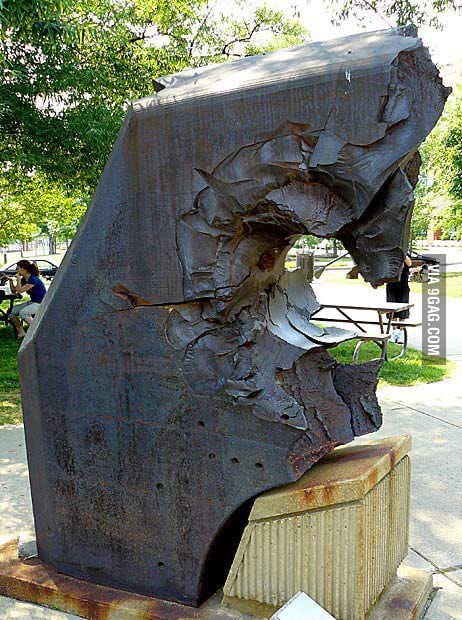
In 1921, US Army General Billy Mitchell sought out to prove that the battleship was obsolete and that aircraft and airpower would be the weapons of the future. In a demonstration that was highly rigged in favor of the Navy, General Mitchell’s aircraft sank 4 ships using aerial bombs only as aerial launched torpedos were prohibited from being used in the test. This ruffled the feathers of a bunch of Admirals and Gubmint officials; people who’s egos usually won’t ever let them accept that they could be wrong about the thing they built a career believing… The Admirals thought dude was nuts even though he proved them wrong with these demonstrations. Ultimately, General Mitchell became Colonel Mitchell after calling out the military and congress on some events of the time. He left the military in 1926 after being court martialed for having a bigmouth and not toeing the line with regards to military matters and events. He was honored later in history though with the B-25 bomber being named after him. The B-25 Mitchell was one of the most successful aircraft built during the war.
The results of Mitchell’s tests were dismissed because the ships were stationary and not able to defend themselves nor maneuver. The attack on Pearl Harbor showed how vulnerable battleships were to aircraft attacks with all of the battleships in port were either sunk or heavily damaged. Three days later on 10 December 1941, British cruiser HMS Repulse and battleship HMS Prince of Wales, along with four destroyers, were out minding their own business in the South China sea near Malaysia when they got jumped by Betty bombers from the Japanese army. That day, the Japanese proved General Mitchell was right all along when they sunk both the Repulse and the Prince of Wales while at sea, able to maneuver, and able to defend themselves with some of the most advanced anti-craft weapons and fire control systems of the day, while being in a convoy with other ships for protection. On 10 December 1941, there was no doubt that the big gun battleship was obsolete.
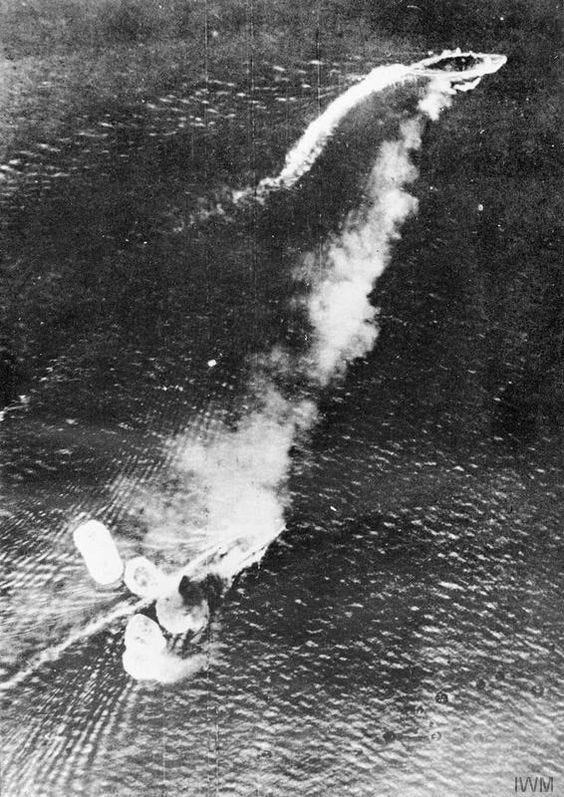
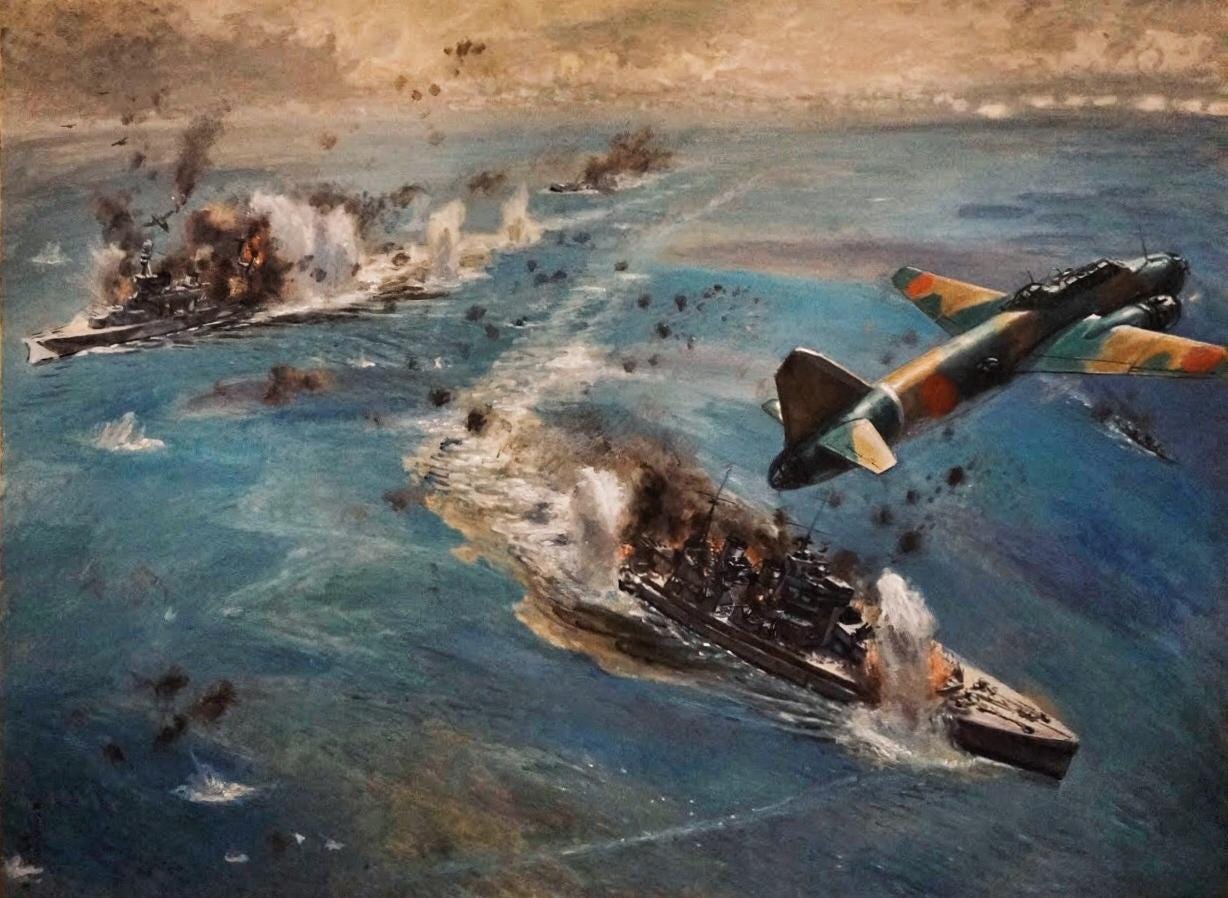
In conclusion, this concludes my random naval history facts for today. As always, please feel free to leave a comment or question. I enjoy answering questions as it helps both of us learn more. If you enjoyed this little trek through naval history or anything else that I’ve written, please feel free to subscribe. It’s free and you can cancel at any time. Hope you have a blessed day.
Kind Regards,
Nate




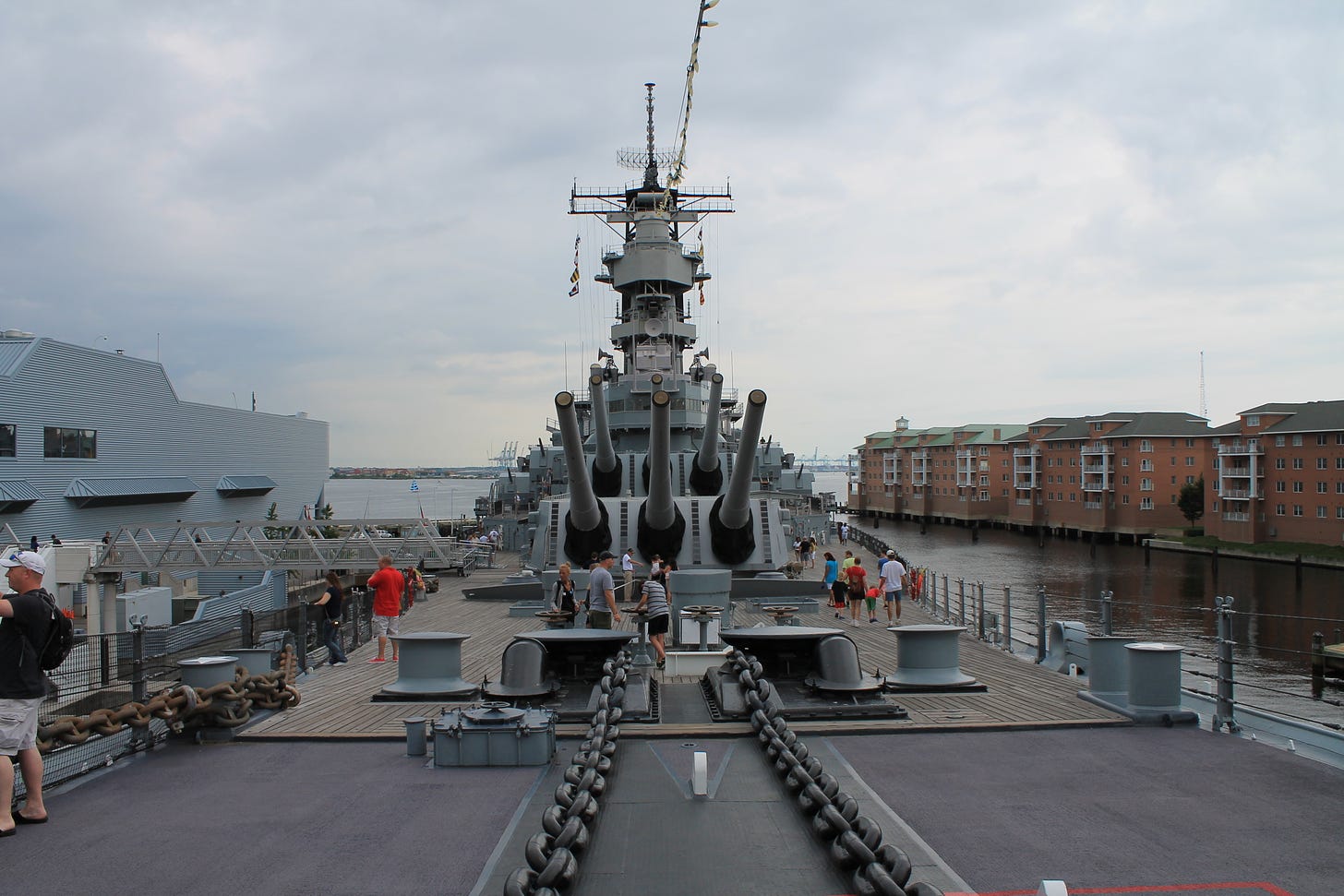
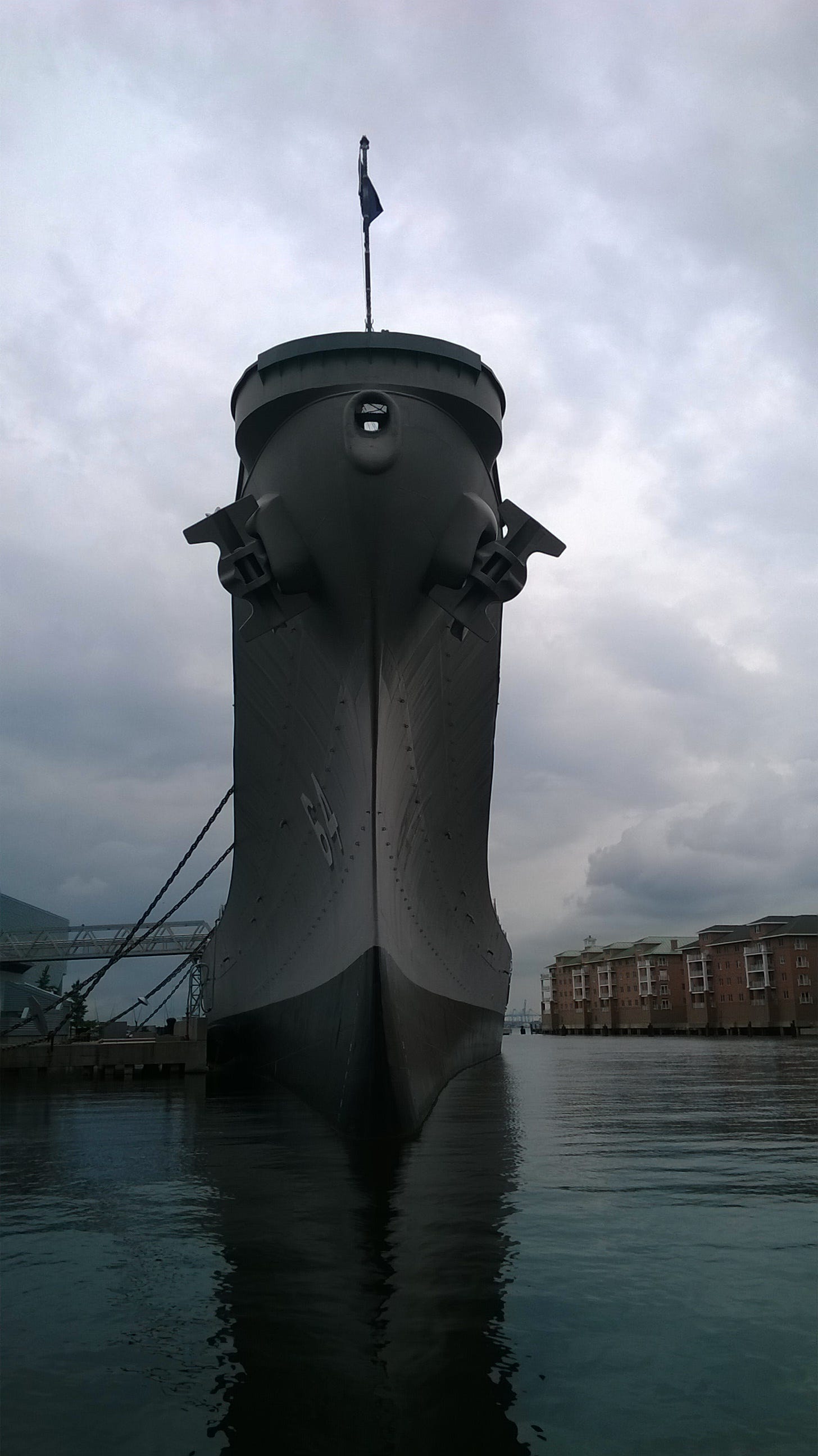
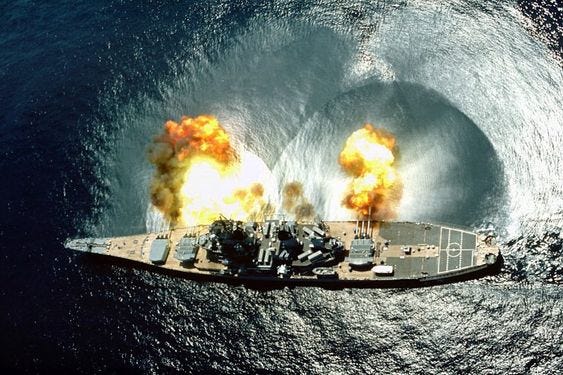
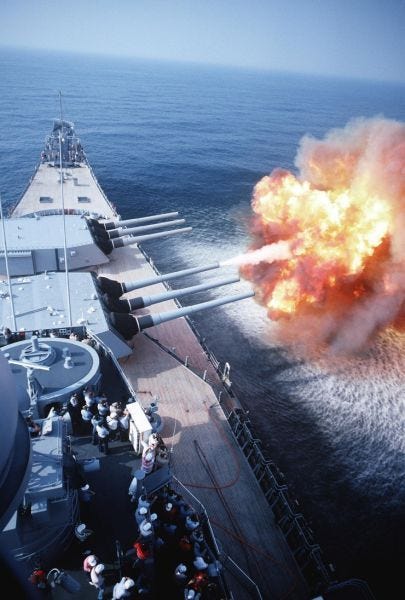
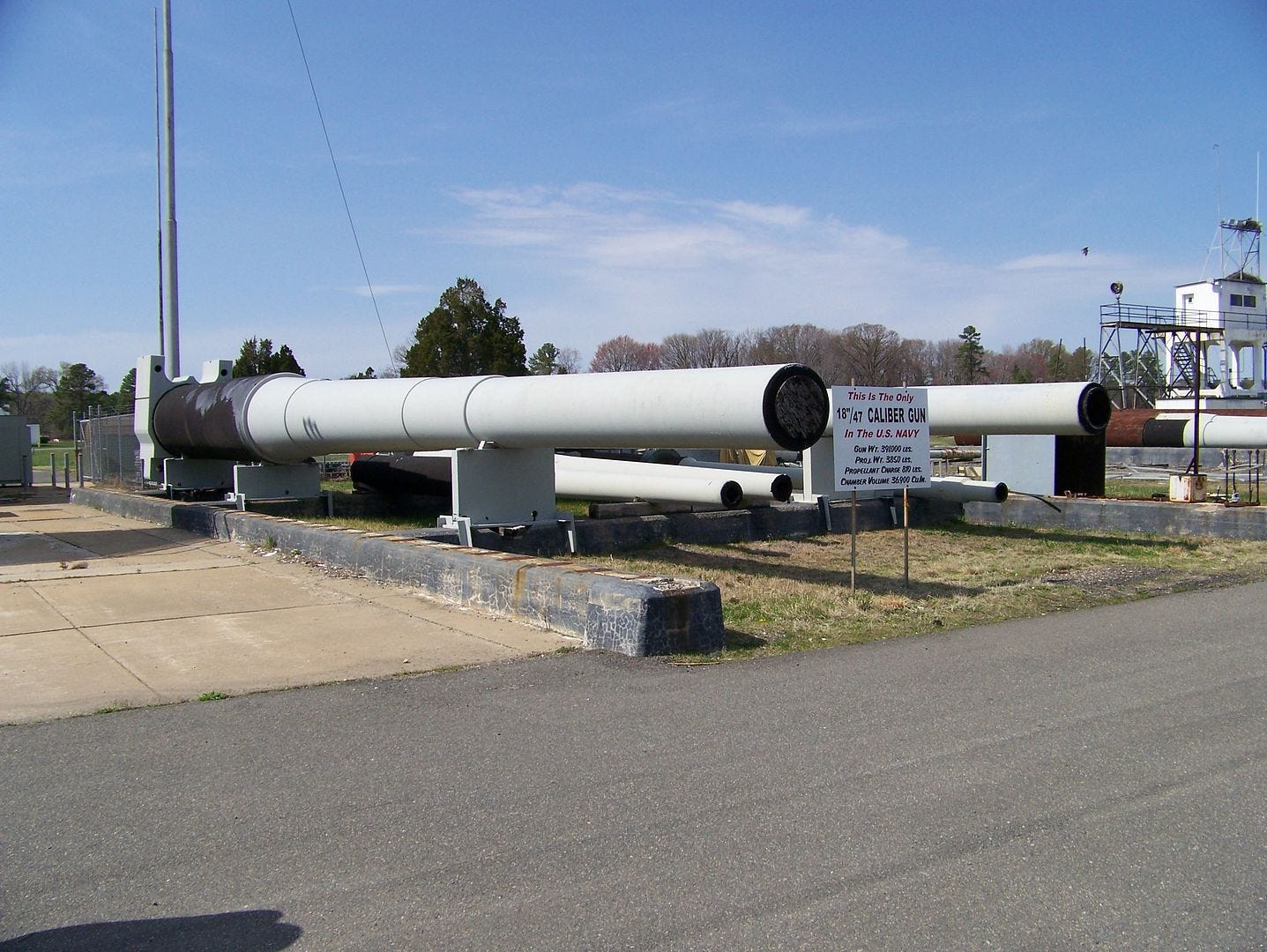
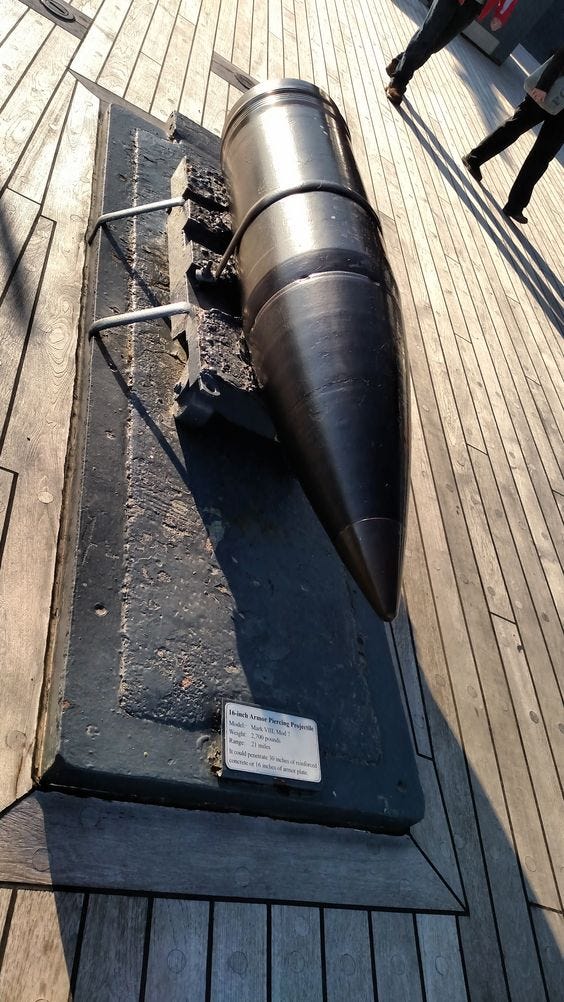
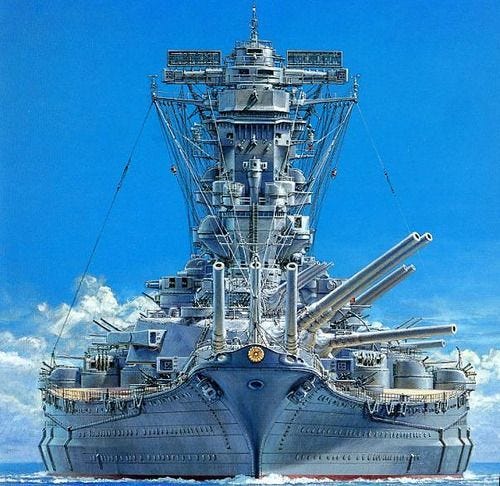
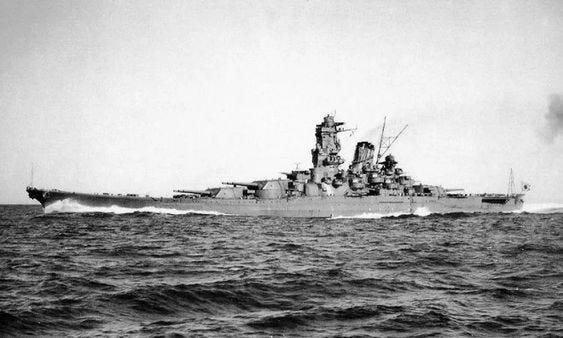
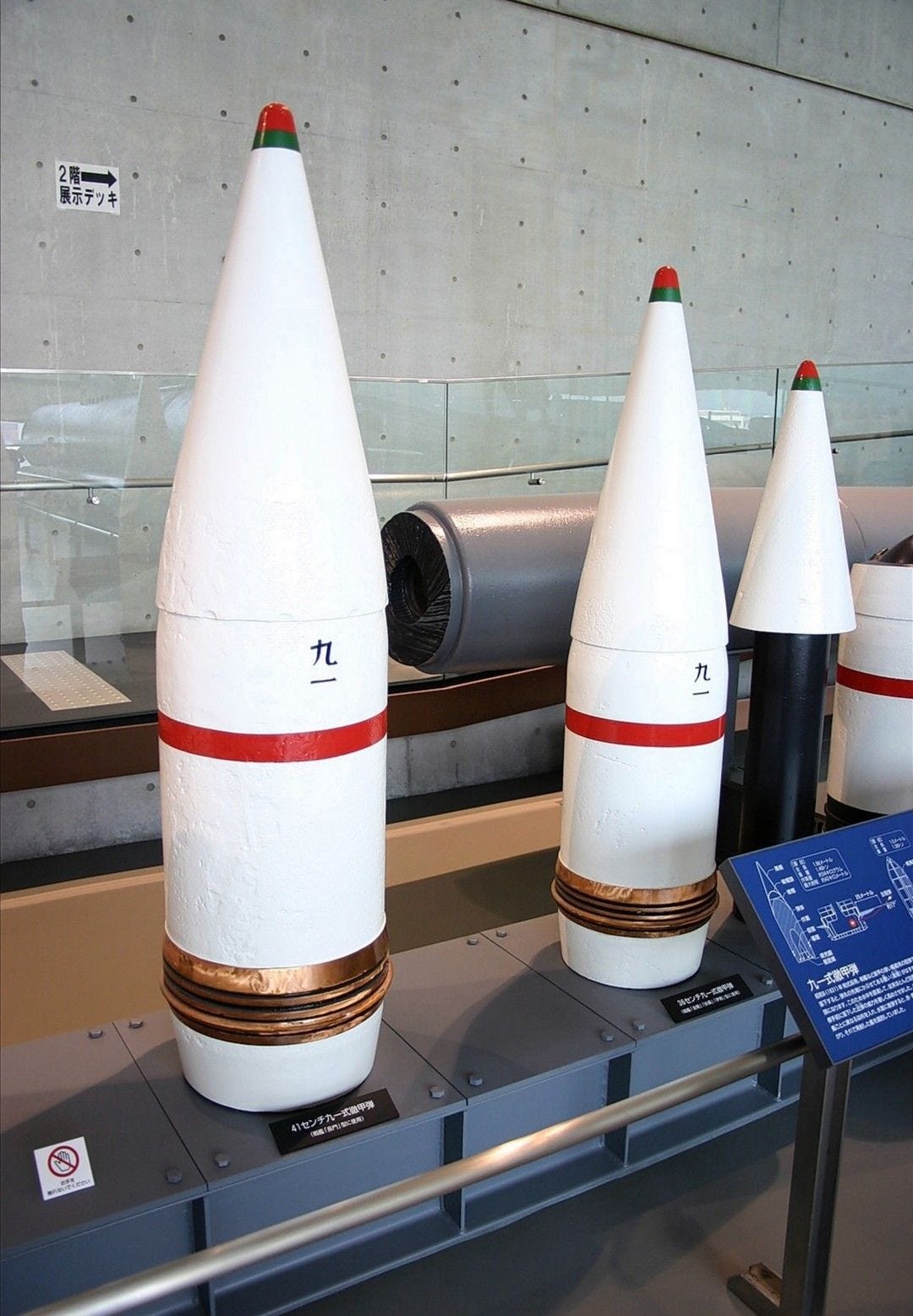
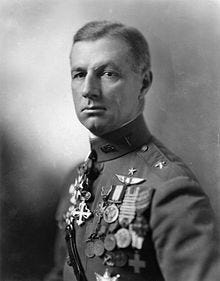
Excellent history! I was reading about the loss of Repulse and Prince of Wales recently.
My wife and youngest daughter love Masterpiece and British period dramas. They are currently watching one called "All creatures great and small" about a small group of British Veterinarians in the English countryside during the lead up to and early years of WW2.
One of the smaller characters is in the Navy, and appeared in a scene just before he shipped out in his uniform with cap. British sailor caps of the time carried the name of their ship, and his was HMS Repulse.
I had to break it to the ladies that this character was likely not going to be coming back from the war.
We’re the destroyers of that time Iowa class of something all together different?